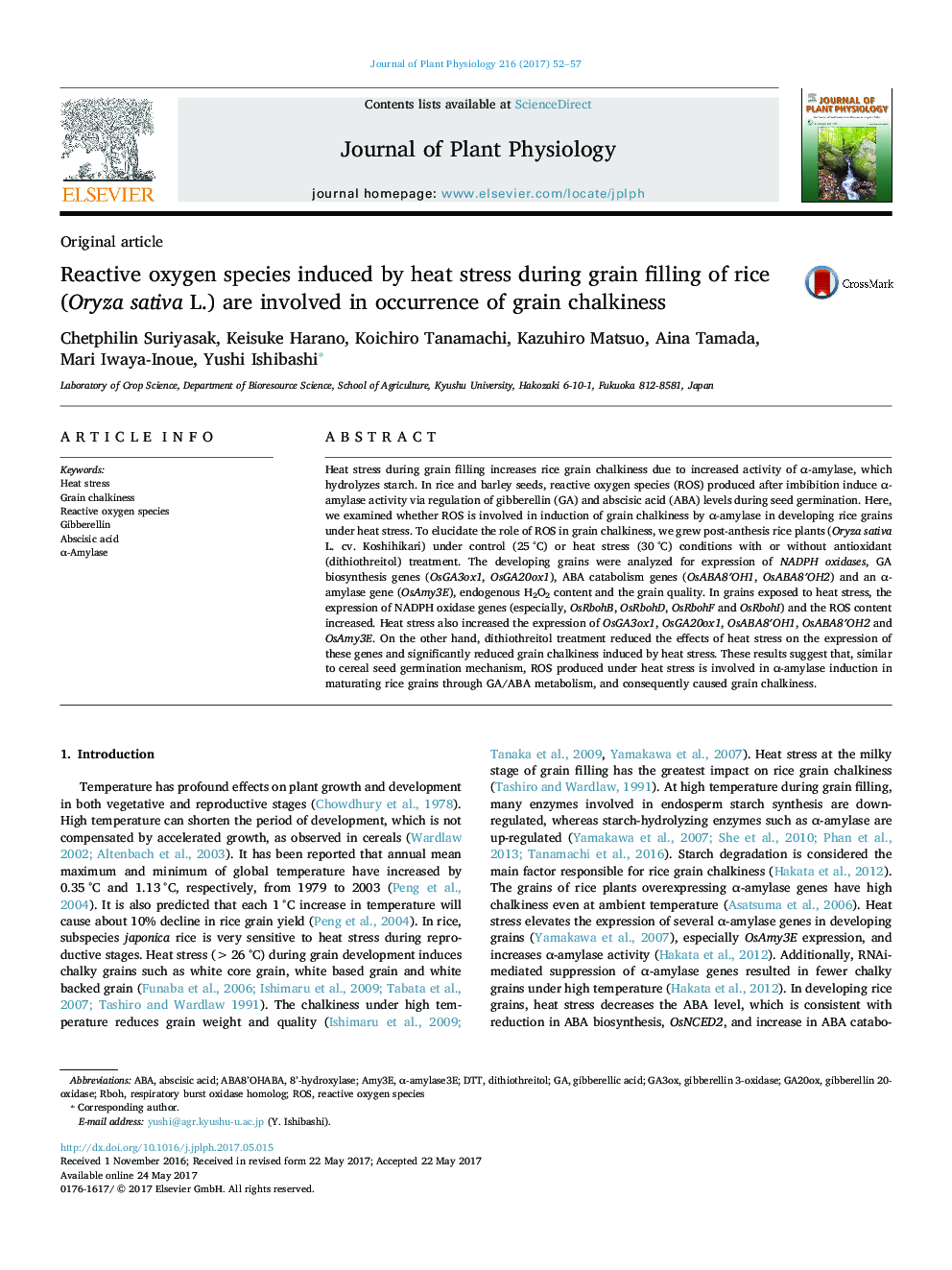| کد مقاله | کد نشریه | سال انتشار | مقاله انگلیسی | نسخه تمام متن |
|---|---|---|---|---|
| 5518021 | 1543862 | 2017 | 6 صفحه PDF | دانلود رایگان |

Heat stress during grain filling increases rice grain chalkiness due to increased activity of α-amylase, which hydrolyzes starch. In rice and barley seeds, reactive oxygen species (ROS) produced after imbibition induce α-amylase activity via regulation of gibberellin (GA) and abscisic acid (ABA) levels during seed germination. Here, we examined whether ROS is involved in induction of grain chalkiness by α-amylase in developing rice grains under heat stress. To elucidate the role of ROS in grain chalkiness, we grew post-anthesis rice plants (Oryza sativa L. cv. Koshihikari) under control (25 °C) or heat stress (30 °C) conditions with or without antioxidant (dithiothreitol) treatment. The developing grains were analyzed for expression of NADPH oxidases, GA biosynthesis genes (OsGA3ox1, OsGA20ox1), ABA catabolism genes (OsABA8â²OH1, OsABA8â²OH2) and an α-amylase gene (OsAmy3E), endogenous H2O2 content and the grain quality. In grains exposed to heat stress, the expression of NADPH oxidase genes (especially, OsRbohB, OsRbohD, OsRbohF and OsRbohI) and the ROS content increased. Heat stress also increased the expression of OsGA3ox1, OsGA20ox1, OsABA8â²OH1, OsABA8â²OH2 and OsAmy3E. On the other hand, dithiothreitol treatment reduced the effects of heat stress on the expression of these genes and significantly reduced grain chalkiness induced by heat stress. These results suggest that, similar to cereal seed germination mechanism, ROS produced under heat stress is involved in α-amylase induction in maturating rice grains through GA/ABA metabolism, and consequently caused grain chalkiness.
Journal: Journal of Plant Physiology - Volume 216, September 2017, Pages 52-57